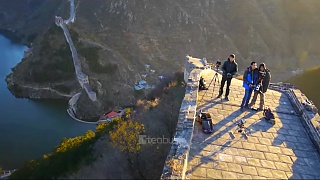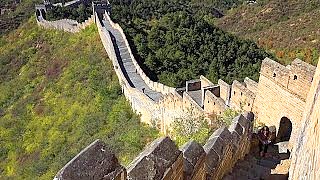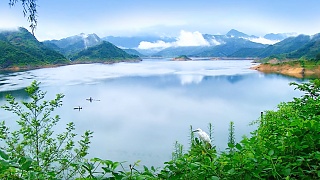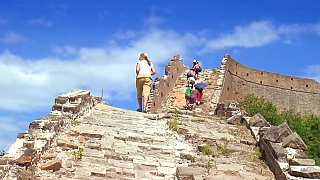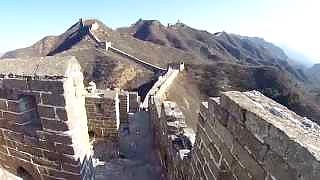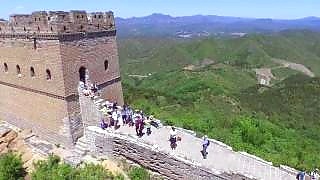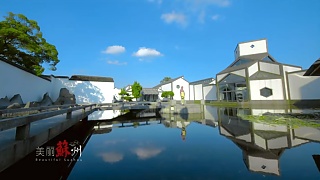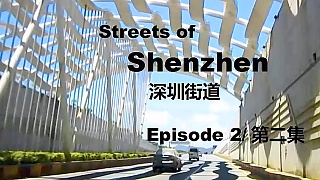With Living The Dream ...
[640],shadow=true,start=480,stop=With YanYan go around in China ...
JinShanLing Great Wall travel guide
Introduction
The JinShanLing section of the Great Wall of China is one of the most well-preserved and scenic parts of the wall, located in the mountainous area of Luanping County, Hebei Province, about 130 kilometers northeast of Beijing. This section offers stunning views, rich historical significance, and a less crowded experience compared to other sections. This guide will help you explore the beauty and history of JinShanLing, including must-see highlights, hiking tips, and practical travel information.
Must-See Highlights
General Tower (将军楼)
The General Tower is one of the most iconic watchtowers on the JinShanLing section of the Great Wall. It offers panoramic views of the surrounding mountains and the winding wall. This tower was used historically for military command and observation.
Wangjing Tower (望京楼)
Wangjing Tower, also known as the Watching Beijing Tower, is named for its view of Beijing on clear days. This tower is a popular spot for photography and offers breathtaking sunrise and sunset views.
Eastern Five-Window Tower (东五眼楼)
The Eastern Five-Window Tower is unique for its five windows on each side, providing excellent vantage points for surveillance in ancient times. This tower is a testament to the strategic architectural design of the Great Wall.
Western Five-Window Tower (西五眼楼)
The Western Five-Window Tower, similar to its eastern counterpart, also features five windows on each side. It offers spectacular views and is a great spot for taking in the expansive landscape of the JinShanLing section.
Big and Small Jinshan Towers (大小金山楼)
The Big and Small Jinshan Towers are two prominent towers named after their different sizes. These towers are significant historical landmarks and provide an excellent opportunity to learn about the defensive mechanisms of the Great Wall.
Hiking Tips
- Best Time to Visit: The best time to visit JinShanLing is during the spring (April to June) and autumn (September to November) when the weather is mild, and the scenery is stunning.
- Hiking Difficulty: The JinShanLing section offers a moderately challenging hike with steep steps and uneven terrain. Suitable for hikers with a reasonable level of fitness.
- What to Wear: Wear comfortable hiking shoes with good grip, breathable clothing, and a hat. Bring layers as the weather can change quickly.
- What to Bring: Carry plenty of water, snacks, sunscreen, and a first-aid kit. A camera is also recommended for capturing the beautiful scenery.
- Hiking Route: A popular hiking route is from JinShanLing to Simatai West, which takes about 3-4 hours and covers some of the most picturesque sections of the wall.
- Guided Tours: Consider hiring a local guide or joining a guided tour for a more informative experience. Guides can provide historical context and ensure you don't miss any key sights.
Practical Travel Information
- Getting There: JinShanLing is accessible by bus, car, or private tour from Beijing. The journey takes approximately 2-3 hours by car. Buses are available from Beijing's Wangjing West Station.
- Entrance Fee: The entrance fee for JinShanLing varies depending on the season. Check the official website or contact local tourism offices for up-to-date pricing.
- Opening Hours: JinShanLing is open from 7:00 AM to 6:00 PM. Plan to arrive early to make the most of your visit and avoid crowds.
- Accommodation: There are a few guesthouses and hotels near JinShanLing for those who wish to stay overnight. Beijing offers a wider range of accommodation options if you prefer to stay in the city.
- Health and Safety: Ensure you are in good health before attempting the hike, as the terrain can be demanding. Stay on designated paths to avoid accidents and respect local regulations and signs.
- Local Services: Facilities such as restrooms and small shops are available at the entrance and at certain points along the wall. However, it's advisable to bring your own supplies for convenience.
Conclusion
The JinShanLing section of the Great Wall of China offers a unique and less crowded experience compared to other parts of the wall. Its well-preserved structures, stunning scenery, and rich history make it a must-visit destination for any traveler. Use this guide to plan your visit and enjoy the incredible beauty and historical significance of JinShanLing. Whether you're a history enthusiast, a photography lover, or an avid hiker, JinShanLing promises an unforgettable adventure.
The Great Wall of China is one of the most iconic and awe-inspiring attractions in the world, drawing millions of tourists each year. Here's a guide for tourists visiting the Great Wall:
History and Significance:
Historical Significance: The Great Wall of China is a series of fortifications built over centuries to protect China from invasions by nomadic tribes from the north. Its construction began as early as the 7th century BC and continued through different dynasties, with the most famous sections built during the Ming Dynasty (1368�1644 AD).
Length and Structure: Stretching over 13,000 miles (21,196 kilometers), the Great Wall is not a continuous wall but a series of walls, trenches, and natural barriers, including mountains and rivers. Its main purpose was to provide defense and control trade routes along the northern border of China.
Visiting the Great Wall:
Sections to Visit: While the entire Great Wall is massive, certain sections are more accessible and popular among tourists. The most visited sections include Badaling, Mutianyu, Jinshanling, and Simatai. Each section offers unique features and experiences.
Badaling: This section is the closest to Beijing and is one of the most well-preserved and accessible sections of the Great Wall. It can be crowded, especially during peak tourist seasons.
Mutianyu: Located about 1.5 to 2 hours' drive from Beijing, Mutianyu offers a less crowded but equally impressive experience. It features restored sections as well as more rugged and original parts.
Jinshanling and Simatai: These sections are farther from Beijing but are known for their scenic beauty and relatively fewer crowds. They offer a more authentic and adventurous hiking experience.
Tips for Tourists:
Best Time to Visit: The Great Wall can be visited year-round, but the best times are spring (April to June) and autumn (September to November) when the weather is pleasant, and the scenery is beautiful.
Avoiding Crowds: To avoid crowds, consider visiting the Great Wall early in the morning or during weekdays. Badaling tends to be busiest, so opting for less-visited sections like Jinshanling or Simatai can provide a more peaceful experience.
Wear Comfortable Clothing: The Great Wall involves a fair amount of walking and climbing stairs, so wear comfortable shoes and clothing suitable for hiking.
Stay Hydrated and Sun-Protected: Bring plenty of water, sunscreen, and a hat, especially during hot summer months, as there may be limited shade on the Wall.
Respect the Environment: Help preserve the Great Wall for future generations by refraining from littering, defacing, or damaging the structure.
Cultural Insights:
Learn about the History: Take the time to learn about the history and significance of the Great Wall through signage, guidebooks, or guided tours.
Capture Memories: Don't forget to bring a camera or smartphone to capture the breathtaking views and memories of your visit.
Interact with Locals: Engage with local vendors, tour guides, or fellow travelers to gain insights into Chinese culture and customs related to the Great Wall.
Visiting the Great Wall of China is a once-in-a-lifetime experience that offers not only breathtaking views and photo opportunities but also a deeper appreciation for one of the world's most remarkable architectural achievements.
 A trip to the awesome JinShanLing Great Wall of China
A trip to the awesome JinShanLing Great Wall of China



